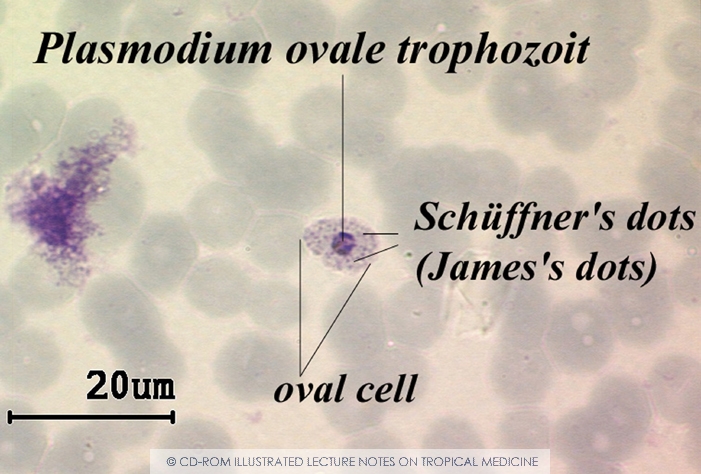- P. ovale is very limited in its range being limited to west Africa with low prevalence (<5%)
- P.Ovale has an incubation period of 10–17 days which is sometimes prolonged to months or years due to the formation of hypnozoites.
- It has a periodicity of 48 hours; the fever it produces is milder than that caused by the benign tertian P. falciparum..
Morphology
trophozoites
- Parasites of P. ovale are usually found in enlarged and stippled red blood cells (James’s dots)
- Host cells show an oval shape, particularly those containing younger stages of the parasites and the host cell may also show “spiking” or fimbriation.
- Young trophozoites are found as compact rings in cells containing Schüffner’s dots.
- The trophozoite rings remain compact as they develop and show little of the amoeboid features common in P. vivax.
Schizonts
- The parasite is smaller than red blood cells and contains 6-12 merozoites.
- The pigment is a brown / greenish central clump.
- The red cell slightly enlarged, stippled, frequently oval and fimbriated.
Gametocytes
- The mature gametocytes are round, filling two thirds of the red cell.
- The female is colored by blue and male is colored by light -pink .





